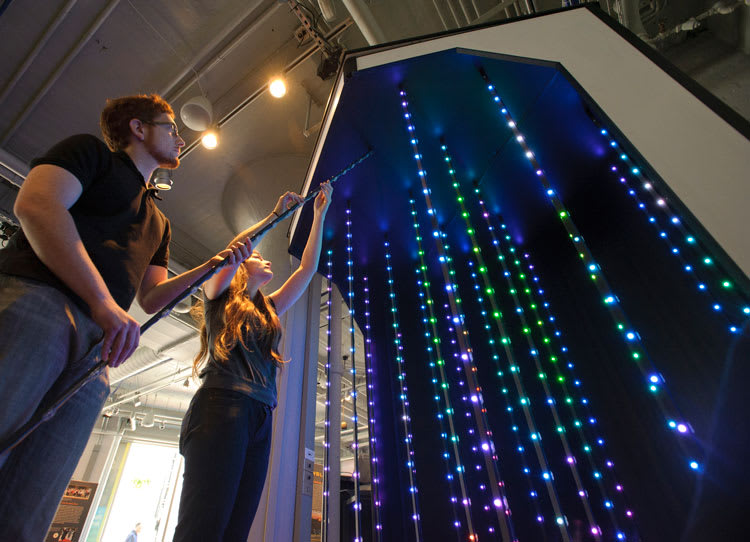The 26th International Conference on Neutrino Physics and Astrophysics, Neutrino 2014, starts today and includes presentations from several IceCube researchers. The conference runs through June 7 in Boston, Massachusetts.
Gary Hill from the University of Adelaide begins with a plenary talk, First Detection of High-Energy Astrophysical Neutrinos with IceCube, in the High Energy Cosmic Neutrinos Session. Hill will discuss the growing astrophysical neutrino signal with IceCube, including a 2-PeV neutrino and future research into the origin of cosmic neutrinos and of ultra-high-energy cosmic rays. The new data along with the upward muon diffuse analysis confirms the discovery of astrophysical neutrinos, which was strongly evident in the analysis featured in the November 2013 issue of Science.
Tuesday, June 3, IceCube collaborators will also present in the Neutrino Oscillations from the Atmosphere session. Atmospheric Results from IceCube/DeepCore, Juan Pablo Yanez Garza, DESY, includes measurement of neutrino oscillations with three years of data with IceCube’s infill array, DeepCore. Darren Grant, University of Alberta, will present Future Atmospheric Measurements with PINGU. Grant will discuss the possibility of determining the neutrino mass order with the proposed IceCube extension PINGU.
The MIT museum is hosting neutrino exhibits throughout the week, including a model of the IceCube detector and a digital optical module. The immersive display plays neutrino events as seen by IceCube, giving visitors the chance to visualize the intangible. Demonstrations and talks related to neutrino physics will be open to the public on Saturday, June 7, from 10 am to 4 pm. Astronomy at the South Pole: Life at the IceCube Neutrino Observatory by IceCube graduate student Laura Gladstone, UW–Madison, will be at 1 pm. More information here.

Poster sessions are on Tuesday, June 3, and Friday, June 6.
IceCube Collaboration posters at Neutrino 2014:
Search for Exotic Double Track Signatures in IceCube author Sandro Kopper, presented by Stephanie Hickford, University of Wuppertal
New calibration methods for IceCube, DeepCore and PINGU by Martin Jurkovič, Technische Universität München
Event Reconstruction and Particle Identification for Low Energy Events in DeepCore and PINGU by Timothy C. Arlen and João Pedro Athayde Marcondes De André, Pennsylvania State University
Sensitivity to tau neutrino appearance with DeepCore and PINGU by João Pedro Athayde Marcondes De André, Pennsylvania State University
Search for Neutrinos from GRBs with IceCube by Robert Hellauer, University of Maryland
Improvements for IceCube’s Supernova Search System by David Heereman, Université Libre de Bruxelles
Astrophysical Tau Neutrino Search with the IceCube Neutrino Observatory by Matthias Vraeghe, University of Gent
Calculating PINGU’s Sensitivity to the Neutrino Mass Hierarchy by Timothy C. Arlen, Pennsylvania State University; Sebastian Böser and Lukas Schulte, Universität Bonn
Unfolding of the Muon Neutrino Energy Spectrum with IceCube by Martin Schmitz, Universität Dortmund